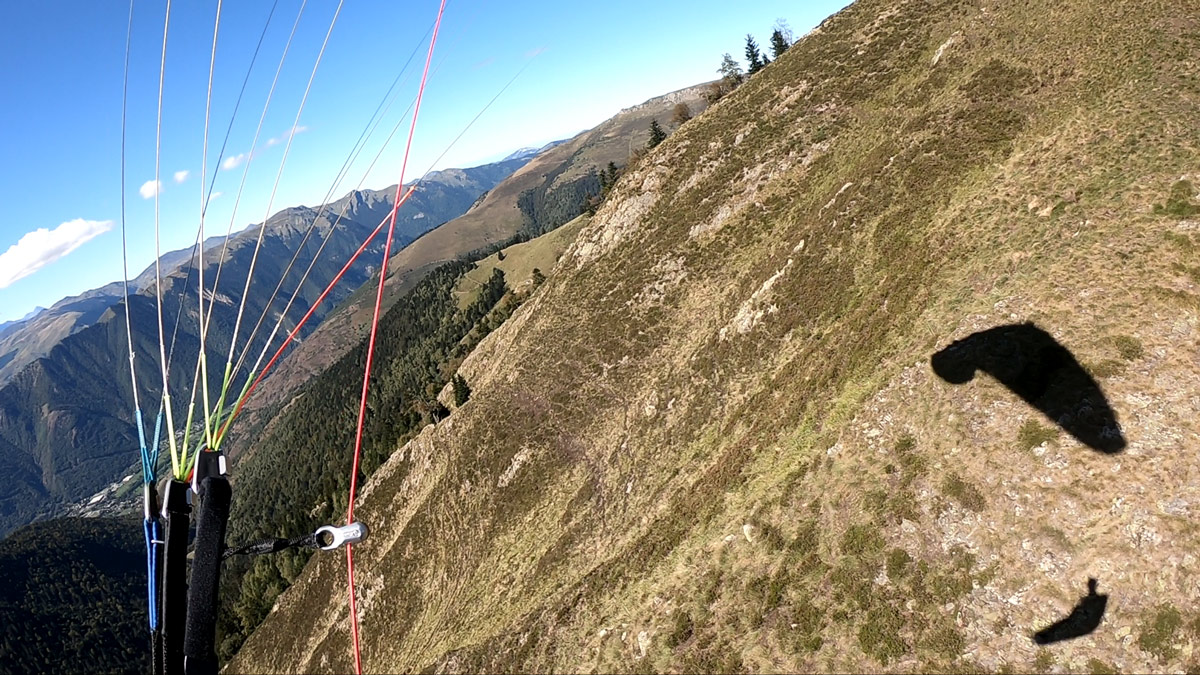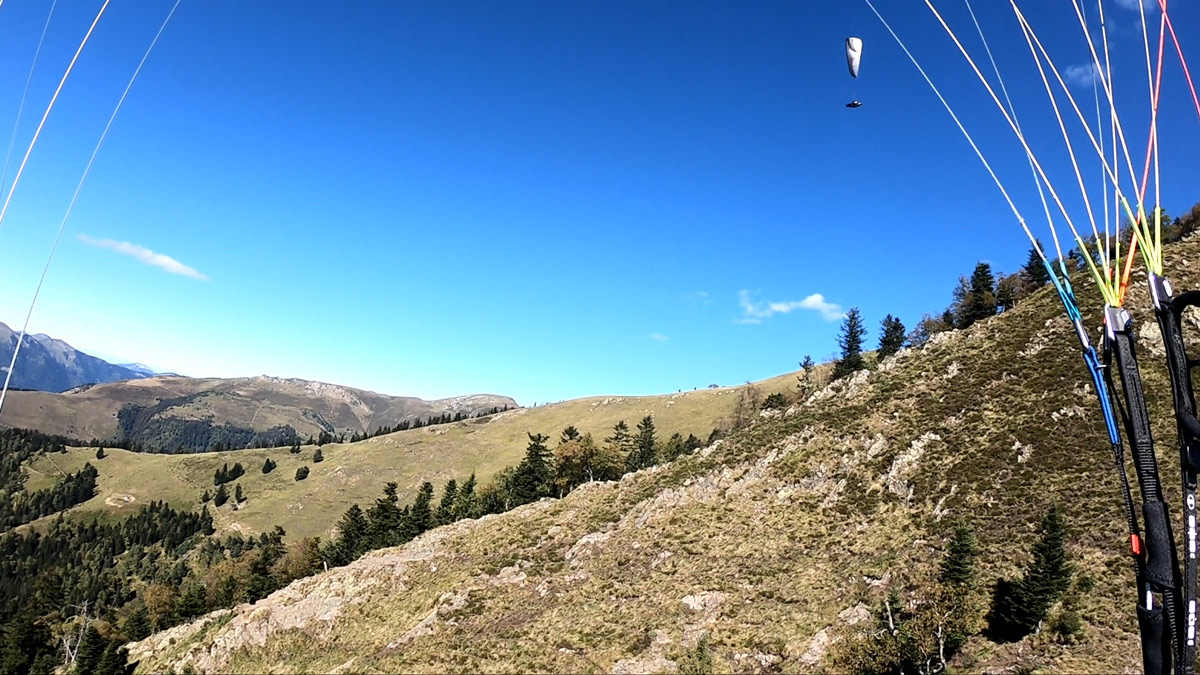
The closer you are to the terrain, the less time you have to react. Keep that in mind as we discuss ‘scratching’: it’s entirely your choice, and you can control how much danger you expose yourself to when cross country flying. You’ll see many experienced pilots flying really close to the terrain because it’s sometimes the only way to stay up, so let’s have a look at how to do it safely.
Why fly so close?

With light thermic winds, and especially early in the day, the warm air created by sunshine on bare surfaces tends to ‘stick’ to the terrain and rises following the slope. This can form a layer perhaps only 50m deep. At 100m away from the terrain (a ‘safe’ distance) there is a return flow of sinking air, so ‘soaring’ out here will just send you down to the valley.
The thermals running up the slope can be continuously fed by more warm air all the way to the crest, which gives them enough fuel to break above the inversion layers that can linger over the valley. So scratching might be the only way to climb into the better airmass above the peaks.
Slope suck

Sometimes the slope isn’t working at all, and it’s just a trap that lures pilots to try and ‘soar’ in light winds when there’s better lift further out. Before gliding tight against the slope have a hard look at the terrain and consider if there’s a place where thermals might be releasing from to upwind. Scratching is only worth pursuing when the slope is working well!
A rough ride
As the wind blows over obstacles, it collects turbulence. As you get close to the terrain, the risk of turbulence increases, especially those nasty little spine-rotors which can throw you towards the slope and interfere with further control inputs. So beware! It’s only possible to do this safely in light winds or with a lot of experience. The more crossed the wind is, the worse the turbulence will be. The stronger the wind is, the less you need to scratch, because you can switch over to soaring the slopes facing into the wind direction.
How can I do it safely?

Improve your proximity flying skills. Tacking up and down the ridge on ‘safe’ soaring beats does not build your flying judgement. Play around on your home site, swooping at the grass, slope landing, top landing, doing touch-and-go’s. Build experience in approaching the terrain. Lose height using big ears, come in close, and try to climb out again. Interact with the slope, and when you’re next out on an XC flight you’ll have the special awareness you need for safe proximity flying.
Improve your active flying and collapse recovery skills. First you need to understand why your wing collapses, when it will do so, and what your wing requires to recover. That’s why SIV training is a fundamental necessity for XC flying, because it allows you to practice your own controls and recovery during asymmetric collapses. Do this many times, until you have an automatic response and can feel what the wing is doing. You shouldn’t be having collapses close to the terrain because your active flying inputs should prevent them happening in the first place, but knowing the limits of your wing helps to guide your inputs.
Improve your experience of thermals. It’s no good chasing a weak thermal up a slope only to get hammered by the wind near the crest because you didn’t recognise that you were flying in the lee side of the hill. So if you’re inexperienced, choose your ‘scratching slope’ wisely. Other pilots are very useful indicators, especially if you let them get slightly closer to the terrain and slightly higher than you. This gives you some warning time. Build experience in thermal flying by visiting the popular summer sites (Annecy, Algodonales, Greifenburg... ). Enter some friendly competitions and you’ll get a route to follow with 100 thermal markers scattered around, to learn from. Chase every good thermal forecast and try to go XC, even if it’s flatland flying, every hour of thermic time helps you develop the skills you need.
And always remember, you’re in command, so match your flight plan with your abilities.
A rough guide to scratching: video
Join Greg on a guided thermaling lesson set close to a slope above Luchon in the French Pyrenees.
Brought to you by Flybubble
Like what we do? The best way to thank and support us is to buy gear from us and recommend us to others. Review our service on Trustpilot and our products on Flybubble Shop. You can also subscribe to Flybubble Patreon. Thank you!

